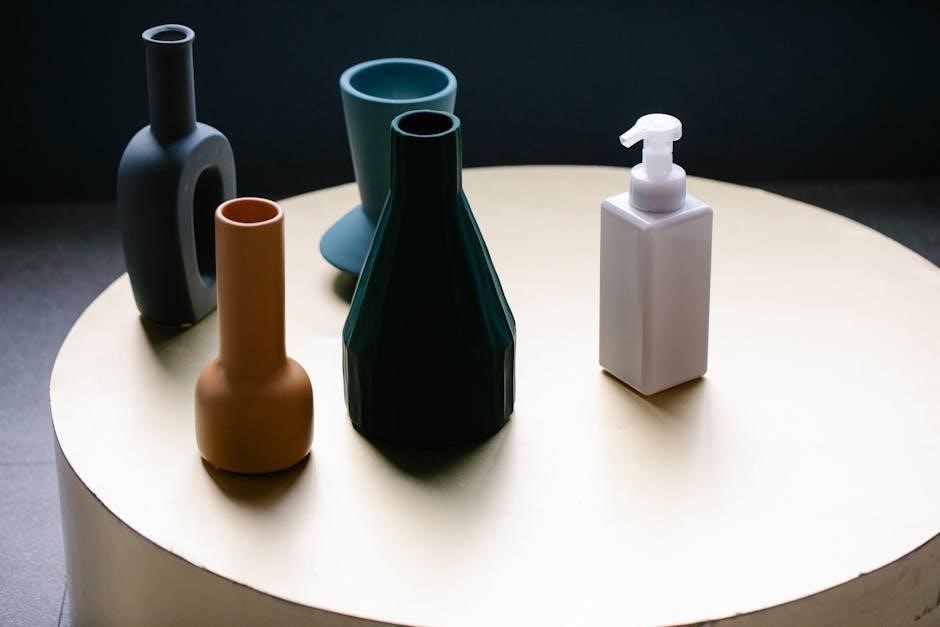The intra-aortic balloon pump (IABP) is a life-saving device used in critical care to support cardiac function in patients with severe heart conditions. Nurses play a central role in managing IABP therapy, ensuring optimal patient outcomes through meticulous monitoring and care. This section provides an overview of IABP nursing care, emphasizing its importance in improving cardiac output and reducing myocardial workload in critically ill patients.
What is an Intra-Aortic Balloon Pump (IABP)?
The intra-aortic balloon pump (IABP) is a medical device used to support the heart in critically ill patients. It consists of a balloon-tipped catheter inserted into the descending thoracic aorta, which inflates and deflates in synchronization with the patient’s cardiac cycle. During diastole, the balloon inflates, increasing coronary perfusion and reducing myocardial oxygen demand. This mechanism enhances cardiac output and alleviates the heart’s workload. The IABP is a temporary mechanical support device, primarily used in patients with severe cardiac conditions such as cardiogenic shock or myocardial infarction. It is a vital tool in intensive care settings, providing life-sustaining support until the heart recovers or further interventions are performed.
Purpose and Historical Background of IABP
The intra-aortic balloon pump (IABP) is a temporary mechanical support device designed to enhance cardiac function in critically ill patients. Historically, the IABP was first introduced in clinical practice in 1967 as a treatment for cardiogenic shock, with its use later expanding to other cardiac conditions such as myocardial infarction and heart failure. Its primary purpose is to improve coronary perfusion, reduce myocardial workload, and increase cardiac output. Over the decades, the IABP has evolved into a cornerstone of critical care, offering life-saving support for patients awaiting recovery or further interventions, making it a cornerstone of modern cardiac care.

Assessment and Preparation for IABP Insertion
Patient evaluation includes assessing cardiac function, vascular access, and clinical criteria for IABP insertion. Informed consent, positioning, and equipment preparation are critical steps, ensuring safe and effective therapy initiation.
Pre-Insertion Patient Assessment
Pre-insertion assessment involves evaluating the patient’s cardiac function, hemodynamic stability, and vascular access suitability. Nurses ensure informed consent is obtained and review contraindications. Assessing for conditions like aortic regurgitation or peripheral artery disease is crucial. Baseline vital signs, cardiac output, and rhythm are documented. The patient’s overall clinical status, including renal function and coagulation profiles, is evaluated to minimize risks. Proper positioning and preparation of the insertion site are also prioritized. This comprehensive evaluation ensures the patient is clinically suitable for IABP therapy and helps identify potential complications early, fostering a safe and effective insertion process.
Preparation of the Patient and Equipment
Preparation begins with explaining the procedure to the patient to reduce anxiety. The insertion site is cleansed and draped using sterile technique to minimize infection risks. The IABP console, balloon catheter, and pressure tubing are assembled and primed according to the manufacturer’s guidelines. The patient is positioned to facilitate access to the femoral artery, and aseptic precautions are maintained throughout. The nurse ensures all necessary supplies, such as heparinized saline and a femoral compression device, are readily available. Strict asepsis is maintained to prevent complications, ensuring a safe and efficient insertion process for the patient.

Nursing Management During IABP Therapy
Nursing management involves continuous monitoring of the patient’s hemodynamic status, ensuring proper IABP function, and managing the femoral insertion site to prevent complications. Regular assessments of cardiac output, urine output, and peripheral perfusion are essential. The nurse also maintains asepsis at the insertion site and monitors for signs of infection or bleeding. Collaboration with the healthcare team ensures timely adjustments to IABP settings, optimizing patient outcomes and promoting recovery.
Initial Setup and Calibration of the IABP

The initial setup of the IABP involves inserting the balloon catheter into the aorta under fluoroscopic guidance and connecting it to the pump console. The nurse ensures proper placement by verifying the catheter tip’s position via chest X-ray. The IABP is then synchronized with the patient’s ECG to inflate the balloon during diastole, augmenting cardiac output. The pressure waveform is analyzed to confirm proper timing and function. Initial calibration includes setting the inflation pressure and ensuring the balloon inflates and deflates correctly. The nurse also performs initial checks of the catheter site, ensuring it is secure and free from bleeding.
Ongoing Monitoring and Adjustments
Continuous monitoring of the IABP is critical to ensure optimal function and patient safety. Nurses must regularly assess cardiac output, peripheral pulses, and blood pressure to evaluate the device’s effectiveness. The pressure waveform displayed on the IABP console is analyzed to confirm proper synchronization with the patient’s ECG, ensuring the balloon inflates during diastole. Adjustments to inflation pressure or timing may be necessary based on clinical findings. Daily inspection of the catheter insertion site is performed to prevent complications such as bleeding or infection. Any abnormalities in the patient’s condition or device function are promptly documented and reported to the physician.

Complications and Troubleshooting in IABP Care
Complications and troubleshooting in IABP care are critical to ensure patient safety. Common issues include bleeding, limb ischemia, and balloon rupture. Nurses must quickly identify and address these problems, often requiring collaboration with the healthcare team to resolve device malfunctions or patient-related concerns. Early intervention is key to preventing adverse outcomes and maintaining effective therapy.
Common Complications Associated with IABP Use
The use of an intra-aortic balloon pump (IABP) is associated with several potential complications. These include bleeding at the insertion site, limb ischemia due to impaired blood flow, and balloon rupture. Additionally, patients may experience thrombocytopenia, infection, or vascular damage. Nerve damage and renal complications can also occur, particularly in patients with pre-existing conditions. Monitoring for these issues is crucial, as early detection can prevent severe outcomes. Nurses must remain vigilant in assessing the patient and the device to promptly identify and manage any complications that arise during IABP therapy.
Troubleshooting Common Issues
Troubleshooting issues with the intra-aortic balloon pump (IABP) requires prompt action to ensure patient safety and device functionality. Common problems include incorrect timing, leading to inadequate cardiac support, and alarm activations due to pressure waveform discrepancies; Nurses should check tubing connections and ensure proper balloon positioning. In case of low cardiac output, adjusting the inflation pressure may be necessary. Regular calibration and monitoring of the pressure waveform are essential to prevent complications. Additionally, addressing patient discomfort, such as pain or anxiety, is crucial to optimize therapy outcomes. Effective troubleshooting ensures continuous, effective support for critically ill patients relying on IABP therapy.

Weaning and Removal of the IABP
Weaning and removal of the IABP are critical steps, requiring careful assessment of the patient’s hemodynamic stability and cardiac function to ensure a safe transition without complications.
Criteria for Weaning
The decision to wean a patient from IABP support is based on stable hemodynamic parameters, improved cardiac function, and the absence of complications. Key criteria include a stable blood pressure, adequate urine output, and sufficient cardiac output without excessive reliance on the device. The patient should demonstrate consistent clinical improvement, such as reduced chest pain and enhanced peripheral perfusion. Additionally, echocardiography or other diagnostic tools may confirm recovered myocardial function. Nurses must ensure gradual reduction of IABP support while closely monitoring the patient’s response to prevent rebound effects or instability.
Procedure for Safe Removal
The removal of the IABP requires careful steps to ensure patient safety and prevent complications. Begin by discontinuing the IABP therapy and ensuring the balloon is fully deflated. Remove the catheter under sterile conditions, applying manual pressure to the femoral site to achieve hemostasis. Use a Femostop™ device if available to minimize bleeding. Monitor for signs of bleeding, hematoma, or distal perfusion issues post-removal. Document the procedure and assess the patient’s recovery. Ensure the patient remains supine for 6-8 hours post-removal to reduce bleeding risks. Provide pain management and reassure the patient throughout the process.

Patient and Family Education
Patient and family education focuses on explaining the IABP’s purpose, functionality, and care requirements. Emphasize the importance of rest, monitoring, and reporting concerning symptoms. Families should understand their supportive role and post-discharge care. Provide clear, accessible information to reduce anxiety and promote adherence to therapy. Ensure patients and caregivers are aware of follow-up care and emergency contact details. Foster a collaborative environment for open communication and address any concerns promptly.
Teaching the Patient and Family About IABP
Teaching the patient and family about IABP involves clear explanations of the device’s purpose, operation, and care. Nurses should explain how the balloon inflates and deflates with the heart’s rhythm, improving blood flow. Emphasize the importance of immobility and avoiding dislodgement. Discuss potential alarms and troubleshooting steps. Provide written materials and demonstrations to reinforce understanding. Address concerns and encourage questions to ensure comprehension. Highlight the temporary nature of the IABP and the transition to recovery. Prepare the family to assist with monitoring and provide emotional support during the recovery process.
Discharge Planning and Follow-Up Care
Discharge planning and follow-up care are critical for patients with an IABP. Nurses should ensure the patient and family understand the recovery process and any necessary precautions. This includes wound care at the insertion site and monitoring for complications. Follow-up appointments must be scheduled to assess healing and overall cardiac function. Patients should be educated on medication schedules and lifestyle modifications to support heart health. Collaboration with healthcare providers ensures a smooth transition to home care, promoting a safe and effective recovery.



